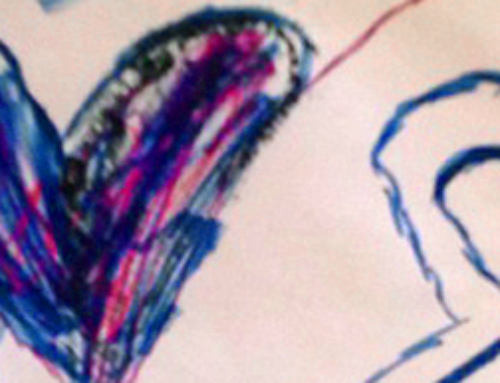 A 58-year-old CT scan technician at a local hospital, the youngest of three sisters, and a recovering alcoholic, Jennie came to therapy four months after healing from surgery to repair an atrial septic defect, one of two major congenital holes in her heart. The repair of one of the major defects, and other secondary repairs had been done during Jennie’s childhood. When we began her treatment, Jennie was about three months into a second episode of sobriety after a relapse prior to heart surgery.
A 58-year-old CT scan technician at a local hospital, the youngest of three sisters, and a recovering alcoholic, Jennie came to therapy four months after healing from surgery to repair an atrial septic defect, one of two major congenital holes in her heart. The repair of one of the major defects, and other secondary repairs had been done during Jennie’s childhood. When we began her treatment, Jennie was about three months into a second episode of sobriety after a relapse prior to heart surgery.
As Scott Miller’s research into therapeutic effectiveness has taught us, the relationship is the key variable in virtually any modality. With this in mind, I decided to utilize the CORE method with Jennie to develop a safe, trusting context in which a strong therapeutic alliance could develop. The method offers a schematic guideline for the utilization of intuition as a curative dimension, particularly in the treatment of trauma. The model is comprised of four components.
- Connecting in a caring climate of calm and comfort
- Orienting toward strengths, including inner wisdom
- Resourcing resilience, evoking awareness of capacity
- Establishing strengths that endure, including symbols and metaphors
Connection
When Jennie first came to therapy, my intent was to attune to her and to her story in a way that would communicate a sense of being heard and clinically “held.” My intention was to create an atmosphere of positive regard in which Jennie would experience acceptance and, with her nervous system sufficiently regulated, feel safe enough to address past painful memories and traumatic events of the past. My strategy was to build a connection with attunement to Jennie’s frame of reference, her beliefs, and her presentation and language, to create a context in which Jennie might better understand events of the present.
As our alliance flourished, I would look for opportunities to offer trance, possibly with a lengthier induction, but maybe a short absorption, in which Jennie might find latent or cut-off resources she could apply in future situations. In this way, I was able to help her to identify and integrate new resources in the service of managing her emotions and behavior in future situations.
For the first two sessions, I mostly listened to Jennie’s story, affirming the trials and problems she revealed. In doing so, I gently guided Jennie to express as clearly as she could what she hoped to get from her therapy. Although I didn’t know at first, or even at the start of any particular session how exactly I might utilize methods of hypnosis and trance in combination with ideas arising from my intuition, I hoped that the strength of our connection, characterized by validation of both Jennie’s struggles and her strengths, would ultimately lead her to recognize and absorb a belief in her own resilience and achieve her clinical goals.
I trusted that as I listened to Jennie’s story with compassion, attuned with an empathic gaze, and validating responses, that I would pick up both overt and minimal cues of what was most important for her. I also believed that as I scanned the impressions arising from my clinical observations, I would recognize cues for what might be needed to help her learn to recognize and shift into a state of calm when sympathetic arousal overwhelmed her emotional boundaries, and what points would stand out for me for utilization of trance.
It did not take long for Jennie to come to her goals. She wanted to deal with cumulative stress that would “pile up” and lead to “rage that can get out of control.” During exploration of her major life stressors, Jennie reported a difficult under-staffed work setting as well as on-going communication problems in the family of origin which included at the time a terminally ill brother-in-law and misunderstandings between herself and her two older sisters, Naida and Meg, that often involved the oldest sister’s daughter, Marcia, a niece who was close to Jennie in age and whom Jennie considered a close friend.
Although Jennie’s life partner, Tony, was dealing with a terminally ill mother, this added stress in Tony’s life was not causing conflict in their life together. From all reports, this primary relationship appeared to be a stable area and an island of support for Jennie. Clearly, she was more likely to be triggered into anger by relationship disturbances with her siblings or with coworkers when differences of opinion resulted in disagreements and distorted perceptions.
Such interpersonal static would cause Jennie to question her understanding of a situation, trying often with difficulty to determine her part in the problem. Often, the aftermath would be distance from her niece or from a sister or might form resentments toward a co-worker that could affect her morale and threaten her sense of competent efficiency at her job.
While Jennie reported no incidents of physical violence toward anyone with whom she would get angry, she expressed high motivation to learn to refrain from lashing out and making disagreements into larger issues that would disrupt contact with her sisters and leave her feeling bereft and disappointed in herself.
These types of painful emotional episodes reminded Jennie of the dysfunction and traumatic chaos caused by alcoholism in her family of origin. She wanted to understand how the old images, left-over impressions, and painful memories of the past affected her in her relationships now.
In the service of self-differentiation, Jennie longed to understand her personal role in these painful experiences. As therapy progressed, Jennie became even more consciously motivated to find strategies for reducing the emotional/somatic arousal that would break through her conscious intent to refrain from lashing out.
Orientation: Toward Strength and Inner Wisdom
My realization was that an inner wise intelligence was available for utilization as part of problem solving, and in this case, specifically for healing trauma via re-association of cut-off strengths and resources.
It seemed both clinically and intuitively advisable to consider orienting Jennie toward her strength and helping her to access via her intuitive, inner wisdom. Jennie, I intuitively hypothesized, would benefit from an approach that would utilize trance and also provide some solid stress management skills. Both the intuitive and the practical would serve to guide Jennie toward the resources she wanted for managing both her emotions and her behaviors, particularly during interpersonal stress and conflict. Like every feature of CORE, intuition would be best accomplished with the CORE features of an approach that would access the non-conscious processes of the intuitive dimension of mind to remind Jennie of strengths she had already used in her life, and access dormant and latent strengths that were, for the moment, dissociated from a consciousness plagued by conscious as well as subliminal memories from her past.
First Intuitive Impressions
As therapy began, so did both overt and minimal cues as well as intuitive impressions. My first initial postulation, based on Jennies wide, welcoming smile, was that she had relational resources she was evidencing, but not fully aware of. I sensed based on the way she connected on screen, face-to-face, eagerly listening to what I chose to say, that Jennie might be open to the focused attention of hypnotic trance, with or without eyes open. While later this proved to be true, at first it was more of a hunch as she was readily beginning to let me know her by revealing a background history of emotional neglect, family conflict, and multiple complex losses, as well as the recent operation to correct a congenital heart defect.
It did not take long for a certain current situation in Jennie’s work life to give me a chance to test out my hypothesis. The idea for the experiential moment came intuitively in the third session. I was working on two channels, the intuitive and the clinical, listening to Jennie, and paying attention to her non-verbals. I was also scanning my own hypotheses. As I was also sorting out clinically what direction I might go in next, Jennie’s narrative gave me the inspiration, an intuitive idea.
Resourcing Resilience
I was able to guide Jennie toward the realization that inner strengths existed and could be available — in this instance, using a brief trance and metaphor, as well as a dissociative moment in the service of integration of strengths.
Jennie revealed that in the imaging department, a complaining and underperforming co-worker was “driving me crazy!” (I was now in intuitive territory). Extremely conscientious in her work, Jennie could feel her anger brewing and escalating as the co-worker’s poor work ethic and performance was leaving her overwhelmed and frustrated. Jennie was adamant that she did not want to lash out or do anything to cause problems for herself at the job, as had happened in other situations in the past. She wanted some help to calm herself so she could cope in a different way.
“Just ignore this person and go about your business,” might have worked for some people, but Jennie’s anger was deeply embedded in her emotional and operational self. I intuited that reaching her non-conscious intuitive mind was the way to go.
“I am so angry when I go in and I see her! I feel like I am just a bitch!”
In that moment, I remembered her history of conflict with two older sisters who had blamed Jennie and called her a bitch! I also knew Jennie had not just a broad smile, but a way of seeing the world with humor. How to externalize this self-denigrating sense of herself was the intuitive question — the answer came quickly and surprised me with its humor and potential to utilize Jennie’s sense of humor — without formal trance. I also knew that I was going to trade in what had felt like a positive alliance.
“Jennie, I have this idea and you can tell me if it seems too odd. (She agreed to hear the idea) Have you ever seen a spray perfume bottle?”
“I just happen to have a very fancy one,” Jennie replied.
“What if you imagine that it is filled with a perfume called “Eau de Bitch?” And you can imagine that you can spray it all around when you go into work, so you know it’s just in the air and it’s not in you!”
Now chuckling, she said; “I love that idea!” I’m going to do it!
Evoking Endurance
“Well, let’s take it one step further, okay? You could also have another imaginary bottle that could be for you. This one could be sprayed in the air like an air cleaner, or on you like perfume. This one could be called “Eau de Calm.”
Now fully belly-laughing, Jennie reported that she was actually going to use the real spray bottle for “Eau-de-Bitch.” She later sent me a picture of the bottle and reported at the next session that not only did she no longer feel bothered by the co-worker, but Eau-de-Bitch could also be a go-to when she was upset by her sisters.
***
Over time, using intuition in my work, and teaching others how to use this psychic dimension of mind, I have learned that although people might understand the concept of what intuition is or can be, may clinicians want something more concrete about how to utilize intuition in the clinical setting — or in life.
[Editor Note: “Jennie” has given the author permission to share her story on psychology platforms for teaching purposes.]




